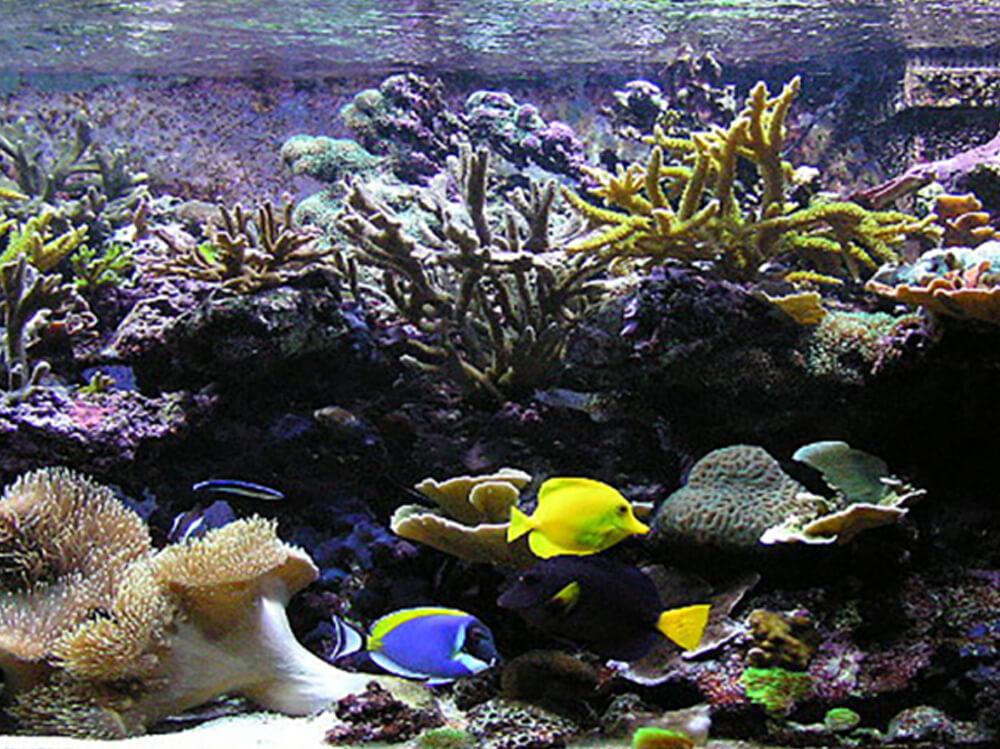How much salt per litre for a marine aquarium?
Marine aquarium owners should aim for a salinity of 1.025 s.g. which is about 35 parts per thousand. That means that for every thousand grammes of freshwater you should add 35 grammes of salt, or 35 grammes of salt per litre of water.
1000g = 1kg = 1000ml = 1 litre
Knowing this can help you makeup saltwater quickly and in bulk. Let try some tank situations:
A reef aquarium may hold 267 litres nett volume. That means that accounting for the thickness of the glass, and sump running height it should take 267 litres of water to fill it up. Take away some more volume for rockwork, sand and equipment and you could add enough salt to make up 250 litres of saltwater, and be pretty much there.
Using a calculator, multiply 250 (litres) by 0.035kg (salt). The answer is 8.75kg of salt are needed to turn that tank into a full-blown marine aquarium. That also gives you an indication of the minimum amount of salt you would need to buy for that aquarium, or if you bought a larger amount like 25kg, how many times it would fill the tank. The answer is three times. The larger the quantity of salt you buy, the cheaper it often becomes by volume. And it’s also good to have some spare for water changes and emergencies.
If the tank is brand new and doesn’t contain anything living, the first batch of saltwater can be mixed in the main tank. Fill with 250 litres of RO water, add 8kg of salt to be on the safe side, then turn on the heater, recirculation pump and wave pump and they will do the job of mixing the salt for you. Once the water is at 25 Celsius and all the salt has dissolved you should take a reading of the salinity using an accurate refractometer.
Despite the above equation the amount of saltwater a salt will actually makeup varies from manufacturer to manufacturer. Some produce more saltwater at 35 grammes per litre and others produce less. If all the salt is dissolved, the water is clear and at the right temperature and your salinity is lower than 1.025 s.g, (like 1.020) add more salt and retest. If the water has a salinity over 1.025 s.g (like 1.027) remove some saltwater and replace it with fresh water until the level comes down.
Take the tank volumes stated by manufacturers with a pinch of (marine,) salt, as often they are stated as gross volumes, ie the maximum volume of the tank’s external dimensions if it was filled up to the brim. No tank is filled to the brim, glass thickness means the inner volume is less again, and of course, rockwork and sand displace water too.
But when measuring salt levels in an aquarium, temperature and an accurate refractometer made especially to measure seawater is key.









